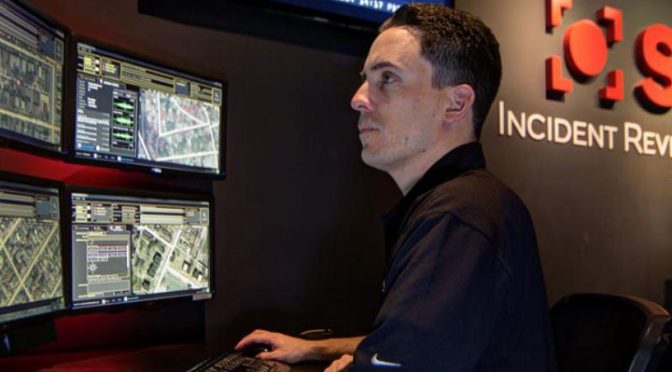Originally published by Tim Cushing at TechDirt
**
Man Shot By Cops Claims Shotspotter Found Phantom ‘Gunshot’ To Justify Officer’s Deadly Force
from the so-are-cops-still-losing-the-tech-race-or-whatever? dept
A lawsuit originally filed early last year makes some very disturbing allegations about police officers and their relationship with their vendors. New York resident Silvon Simmons was shot three times by Rochester Police Officer Joseph Ferrigno. Simmons was unarmed, but was hit with three of the four bullets fired by Ferrigno as he ran way from the officer.
Shortly before being shot. Simmons had been engaged in “Minding Your Own Business,” which can apparently be nearly-fatal. Returning from a trip to a convenience store shortly after 9 pm, Officer Ferrigno cut in front of him, hit Simmons with his spotlight, exited his car with his gun drawn, and opened fire when Simmons began running. According to Simmons’ amendment complaint [PDF] filed in August, Ferrigno never stated he was police officer before opening fire. Simmons, blinded by the spotlight, was unsure who was shooting at him. Even if he had known it was cop, he still would have had no idea why he was being stopped, much less shot at.
The number of bullets fired matters, as Tracy Rosenberg of Oakland Privacy reports. Something seriously messed up happened after the shooting. A gun was found in the yard several houses away from where Simmons was stopped. Cops tried to tie this weapon to Simmons to justify Ferrigno’s deadly force use, despite the gun being located in the opposite direction of Simmons’ flight path.
Not that it would have mattered if it had been found in the same yard where Simmons lay “playing dead” in order to not get shot again by his unseen assailant.
A Ruger handgun was said to have been recovered at the site an hour or so later. The Ruger did not belong to Silvon Simmons. His fingerprints and DNA were not on the recovered gun. The only shell casings recovered at the site were the four bullets from the officer’s Glock. The Ruger had an empty magazine and it was not in the lockback position, indicating it had not been recently fired.
Simmons offered to give the officers even more evidence, but since it was exculpatory, they weren’t interested.
Simmons requested his hands and clothing be checked for gunpowder residue. The request was denied. Simmons repeated the request in writing while intubated at the hospital and was told to stop writing questions.
Having reverse-engineered a narrative to support the shooting, cops set about charging Simmons with attempted aggravated murder, attempted aggravated assault on a police officer, and criminal weapon possession. Simmons spent more than a year in jail before being acquitted on all charges. The wounds he sustained are permanent.
The dark and disturbing wildcard in this lawsuit is a Shotspotter gunshot detection device. The sensor reported no shots that night. What it detected during the shooting of Simmons was determined by the device to be “helicopter noise.” That alone is concerning, considering the main job of the Shotspotter is to spot gunshots.
But that all changed once a police officer got involved. The Shotspotter forensic report says the incident switched from “helicopter noise” to “multiple gunshots” at an officer’s request. This officer requested something extra though: an additional gunshot to support the narrative used to charge Simmons with murder/assault and give Officer Ferrigno post-incident permission to shoot the man fleeing from him.
A Rochester police officer acknowledged at the criminal trial of Silvon Simmons that he left the shooting scene after midnight, returned to the fourth floor at the Central Investigations Division of the Rochester Police Department, logged onto a computer and opened a chat session with Shotspotter, where he provided the location, time, the number of possible shots and the caliber of the weapons allegedly fired. Officer Robert Wetzel also testified that Shotspotter responded to him that they found a fifth gunshot at his request.
Shotspotter’s forensic analyst certified the report, testifying that five shots were fired. Shotspotter somehow managed to detect another gunshot hours after the incident, using only the guidance of an officer who desperately needed another shot on the record. The company’s forensic expert basically admitted this much while testifying.
This conclusion was based solely upon information provided to Shotspotter by the Rochester Police Department.
There may have been a simple way to prove/disprove the existence of another gunshot — one that can’t be traced to the weapon found or have been observed by anyone but the officer who needed a justification for his deadly force deployment. Spotshotter retains recordings… usually. But somehow this essential recording capturing an officer-involved shooting vanished.
[Shotspotter forensic analyst Paul] Greene testified at the criminal trial that there was “no way to go and look at the original file that was recorded and there is no way to listen to all the audio from that day”. The reason there was no way to do this was that both Shotspotter and the Rochester Police Department had lost the audio recording from the night of April 1, 2016.
Whatever doesn’t agree with the narrative had to go, and so Shotspotter’s recording went. Shotspotter has customers to please and shareholders to earn profits for. If the customer isn’t happy with the product, they’re unlikely to keep buying more. If keeping a customer happy means deleting recordings and certifying altered forensic reports, so be it. Whatever it takes to ensure the revenue stream keeps flowing — even if “whatever” means framing a gunshot victim for a crime he didn’t commit.

